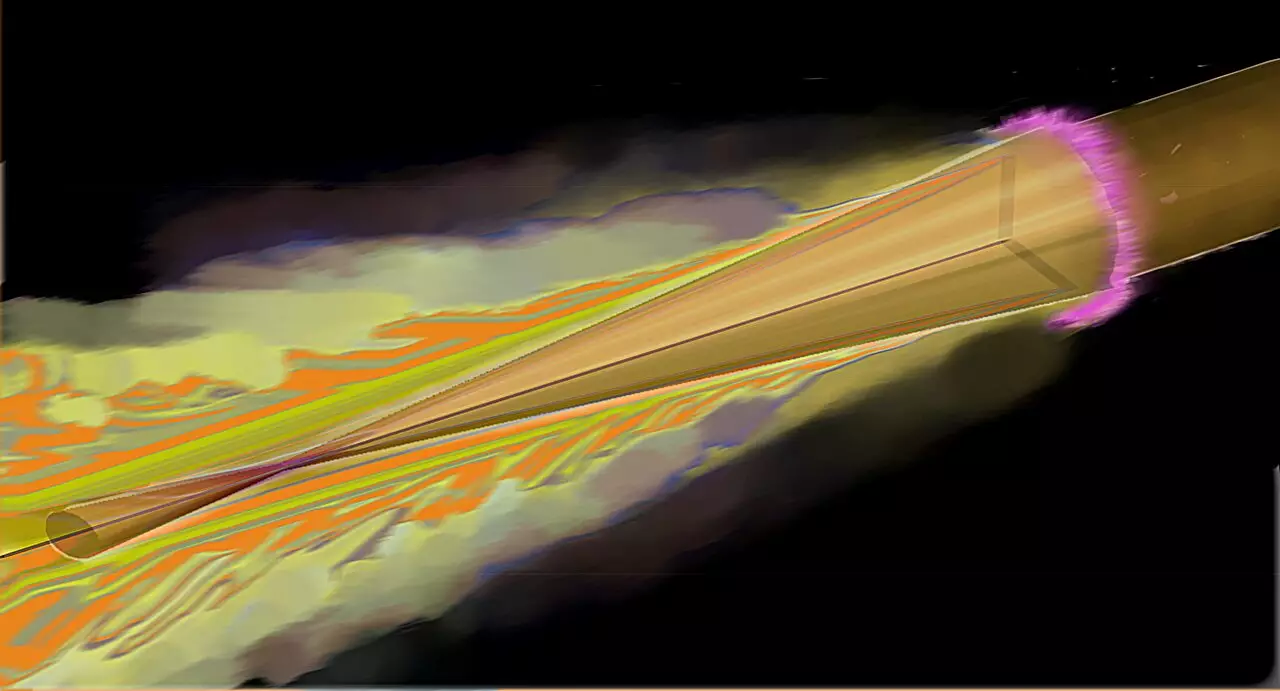Within the cosmic arena, stars and planets exist under conditions that are almost unimaginable to us Earth-dwellers. The extreme environments are characterized by pressures soaring to millions of bars and temperatures reaching several million degrees Celsius. Scientists have long sought to replicate these conditions in the laboratory to further understand the fundamental properties of matter under such duress. Traditionally, this endeavor required vast resources and the use of the world’s most powerful lasers, like the ones at the National Ignition Facility in California. However, recent advancements have demonstrated that significant breakthroughs can be achieved in this field using more compact and accessible technologies.
Innovation in Laser Design
A recent study led by researchers from the Helmholtz-Zentrum Dresden-Rossendorf (HZDR) has unveiled a new methodological approach that allows for the exploration of these extreme conditions with a smaller laser setup. The breakthrough is especially significant as it is based on firing high-energy laser pulses at a diminutive copper wire, which is finer than a human hair. The method enables scientists to produce shock waves that compress the material and replicate the extreme states found in planetary interiors and stellar shells—albeit for only a fraction of a second.
The existing heavyweights in laser technology have limited accessibility for researchers, constraining experimental opportunities and extending the timeline for scientific discovery in this field. By employing a copper wire only 25 micrometers thick, the research team utilized a specialized experimental station, creating an accessible pathway for future investigations.
At the core of this revolutionary study is a unique synergy between high-energy laser systems and ultra-strong X-ray beams. The combination allows for comprehensive observation of the phenomena triggered by the laser interaction with the wire. The lead author of the research paper, Dr. Alejandro Laso Garcia, emphasizes that the painstaking measurements enabled the scientists to create a “detailed X-ray film” of the observed events.
As the laser pulse interacts with the copper wire, it generates a local shock wave that travels through the wire, simultaneously creating a high-energy electron field along the surface of the wire. This interaction results in multiple shock waves converging at the center, generating pressures and temperatures that momentarily mirror those found in extreme celestial environments. Dr. Toma Toncian, head of the HIBEF department, explains that the dramatic rise in density and temperature allowed the team to reach critical metrics not previously accessible in laboratory settings. The achieved conditions rival those seen within white dwarf stars, with pressures measured at 800 megabars and temperatures soaring past 100,000 degrees Celsius.
The implications of this study extend far beyond stellar modeling. For astrophysicists, the ability to replicate conditions similar to those found within gas giants and exoplanets could provide deeper insights into their formation, evolution, and fundamental characteristics. The research team also plans to experiment with wires made of other materials, such as iron and plastic. Given that these materials are elements commonly found in the universe, they could expand the scope of studies into various astrophysical phenomena.
Moreover, this research holds significant promise for another field: fusion research. As the quest for sustainable fusion energy continues, the methodologies developed in this study could illuminate the processes occurring within fusion fuel capsules when struck by high-energy laser pulses. With several teams working on high-performance fusion reactors, the insights gained through this new experimental approach could yield substantial advancements in energy generation.
The convergence of advanced laser technology and innovative experimental techniques marks a pivotal shift in our understanding of extreme physical conditions. As scientists delve into the dense and thermally expansive realms mimicked in this research, we can anticipate a wealth of discoveries that bridge astrophysics and fusion energy. Future experiments will not only enhance our knowledge of material science but also drive the development of clean energy solutions that could potentially transform our planet’s energy landscape. The method pioneered by the HZDR and the European XFEL may very well pave the way for countless breakthroughs in both fundamental science and practical applications.


Leave a Reply